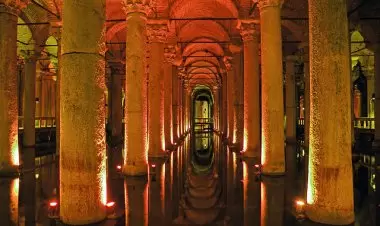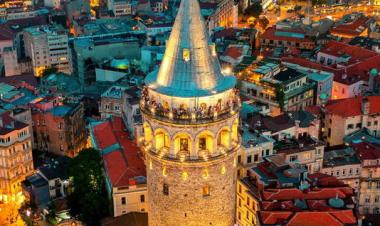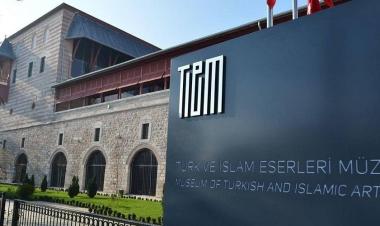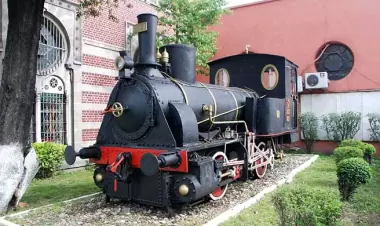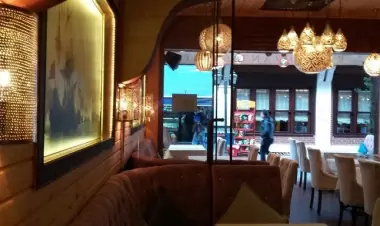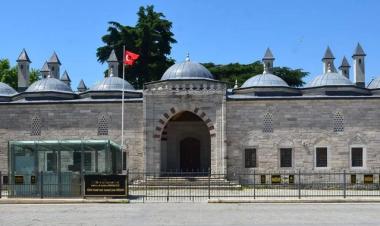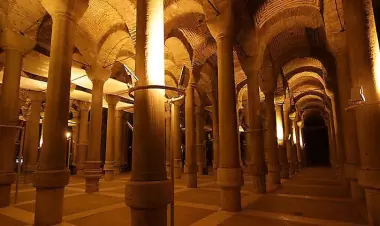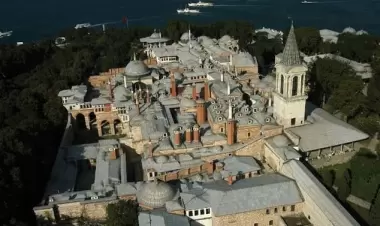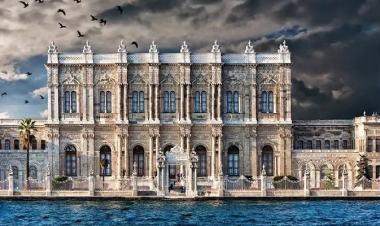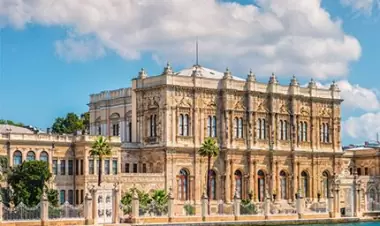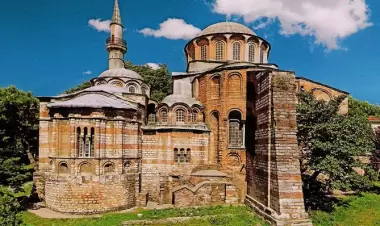Galata Mevlevi House Museum
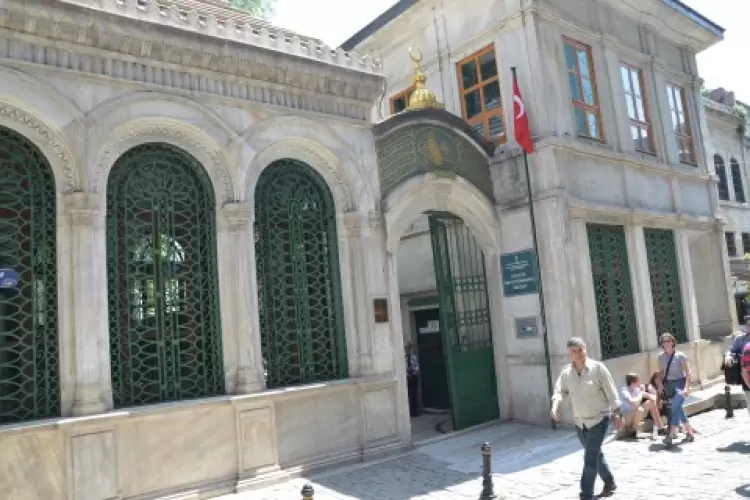
History of the Galata Mevlevi House Museum

Founding of the Mevlevi Order

The Mevlevi Order was founded in the 13th century by Sultan Walad, the son of the renowned Persian poet and mystic Jalaluddin Rumi. Rumi’s teachings on love, tolerance, and devotion became the core principles of the Mevlevi path, which focuses on achieving spiritual enlightenment through practices like music, poetry, and the famous Sema (whirling dance).
Establishment of the Galata Mevlevi House

The Galata Mevlevi House was founded in 1491 in Istanbul's Galata district, a significant historical and commercial area. It was one of the largest and most influential Mevlevi lodges (called Mevlevihanes) in the Ottoman Empire. The building was a place of worship, education, and spiritual guidance for dervishes (followers of Sufism) and those interested in mystical traditions.
The Galata Mevlevi House was not just a place for spiritual practices, but also a hub for scholars, artists, and musicians. It included a mosque, library, tomb of the Mevlevi sheikh, and the Sema hall where the whirling dance ceremonies took place. During the Ottoman period, it played a crucial role in maintaining the spiritual life of the city.
In 1925, following the disbandment of the Mevlevi Order by the secular Turkish government, the Galata Mevlevi House ceased to function as a religious lodge. It was later converted into a museum in 1975, preserving the practices, artifacts, and teachings of the Mevlevi tradition.
Key Facts About the Galata Mevlevi House Museum

- Location:Located in the Galata district of Istanbul, near the famous Galata Tower and the Golden Horn, the Mevlevi House is easy to reach from the city center.
- Date of Conversion to Museum:The building became a museum in 1975, after being restored and repurposed to showcase the history and cultural significance of the Mevlevi Order.
- Architectural Style:The building follows traditional Ottoman architecture with a neoclassical influence, characterized by an ornate façade and wooden interiors. The Sema hall is designed for the performance of the whirling dance.
- Exhibits:The museum houses a rich collection of Mevlevi artifacts, such as religious manuscripts, calligraphy, musical instruments like the ney (reed flute), and ceremonial garments worn by the dervishes during Sema. These objects help to illustrate the spiritual and cultural practices of the Mevlevi tradition.
- Tomb of the Sheikh:The tomb of the Mevlevi sheikh is located in the museum complex, offering visitors a chance to pay their respects to the spiritual leaders who once guided the Mevlevi community.
Importance of the Galata Mevlevi House Museum

Preserving the Sufi Tradition

The Galata Mevlevi House Museum is one of the few remaining structures that preserve the rich spiritual and cultural heritage of the Mevlevi Order. It offers visitors a deeper understanding of the Sufi mysticism that flourished in the Ottoman Empire. The museum’s exhibitions help safeguard the teachings of Jalaluddin Rumi and other Sufi mystics, which emphasize love, tolerance, and the pursuit of inner peace.
Educational and Cultural Impact

The museum is also a key educational resource for scholars, students, and anyone interested in Sufism and the Ottoman Empire's religious practices. Through its regular exhibitions, workshops, and performances, it teaches the significance of the Mevlevi practices like whirling, music, and poetry as tools for spiritual awakening.
Cultural Symbolism of the Whirling Dervishes

The practice of whirling has become one of the most recognizable symbols of Turkish spirituality. It represents the mystical journey of the soul towards God. The Sema ceremony, in which the dervishes whirl in a meditative dance, is a unique form of devotional worship. By maintaining this tradition, the museum preserves an important aspect of Islamic mysticism that has inspired people around the world, transcending religious and cultural boundaries.
Mevlevi Religion and Practices

The Sema Ceremony
The Sema (whirling dance) is the hallmark of the Mevlevi Order. During the ceremony, participants, dressed in white robes and conical hats, whirl in circles while performing a spiritual dance meant to symbolize the soul’s journey toward divine union. The whirling is accompanied by the sound of the ney (reed flute) and other Sufi instruments, which facilitate the trance-like state.
Core Beliefs of the Mevlevi Order
The Mevlevi Order follows a mystical path that emphasizes the removal of the ego, the development of self-awareness, and the union with God. It places great value on love, humility, and spiritual purity. The teachings encourage followers to look beyond the material world and focus on the inner journey.
Jalaluddin Rumi, the founder of the Mevlevi tradition, is one of the most revered figures in the Islamic world, and his poetry is a cornerstone of the order’s teachings. His work, particularly the Divan-e Shams-e Tabrizi and the Mathnawi, explores themes of love, mysticism, and the nature of God.
The Role of Music in Mevlevi Rituals
Music plays a central role in Mevlevi practices. The ney, a reed flute, is considered the voice of the soul, longing for its creator. It is used during the Sema ceremony to lead participants into a state of spiritual transcendence. The music accompanies the whirling and guides the participants toward a state of ecstasy or divine love.
Activities at the Galata Mevlevi House Museum

Sema Performances
The most prominent activity at the Galata Mevlevi House is the Sema performance, where visitors can witness the breathtaking dance of the dervishes. These performances, accompanied by traditional Sufi music, typically take place in the evening or during special events. They provide a moving and profound experience that connects visitors to the spiritual essence of the Mevlevi tradition.
Workshops and Lectures
The museum organizes workshops, seminars, and lectures on topics related to Sufism, the life of Rumi, and the Mevlevi teachings. These educational programs allow visitors to deepen their understanding of the Mevlevi philosophy and its place in Turkish culture.
Exhibitions
The museum offers both permanent and temporary exhibitions showcasing Mevlevi artifacts, including manuscripts, calligraphy, and religious instruments. These exhibits offer insights into the daily lives of the dervishes and the rich history of the Mevlevi Order.
Special Events and Religious Celebrations
On important dates, such as Mevlana Week (celebrating Rumi’s death anniversary in December), the museum hosts special events, including whirling performances and commemorative ceremonies. These events attract large crowds and are a significant part of Istanbul's cultural and spiritual calendar.
How to Visit the Galata Mevlevi House Museum

Location
The museum is located in the Galata district of Istanbul, close to the Galata Tower and near the Beyoğlu area, easily accessible by public transport, walking, or taxi.
- Address: Galata Mevlevihanesi Müzesi, Galip Dede Caddesi No.15, Beyoğlu, İstanbul, Turkey
Opening Hours
- Monday-Sunday:9:00 AM –5:00 PM
- Closed on public holidays or special occasions, so it’s advisable to check in advance.
Ticket Information
- Entry Fee:There is usually an entry fee, though it is modest. Some discounts may apply for students or groups.
Public Transportation
- Tram:Take the T1 tram to the Karaköy station, which is a short walk from the museum.
- Metro:The nearest metro station is Şişhane (M2), a 10-minute walk from the museum.
Frequently Asked Questions (FAQ)

Where is the Galata Mevlevi House Museum located?
The museum is located in Istanbul's Galata district, which is close to the Galata Tower and the Golden Horn. The address is:
- Galata Mevlevihanesi Müzesi
- Galip Dede Caddesi No.15
- Beyoğlu, İstanbul, Turkey
It is centrally located in one of Istanbul’s most historic and vibrant neighborhoods, making it easy to combine a visit with other nearby attractions.
What are the museum's visiting hours?
The Galata Mevlevi House Museum is generally open every day except for public holidays and special religious occasions. Here are the typical visiting hours:
- Monday to Sunday:9:00 AM –5:00 PM
- Closed on public holidays (check the official website or call ahead for specific closures).
It’s always advisable to check in advance, especially if you are planning to visit during special times of the year (e.g., Mevlana Week in December), when events or performances might affect the schedule.
How much is the entry fee?
- General Admission:The museum charges a modest entry fee (around 20-30 Turkish Lira).
- Discounts:Reduced prices are available for students and groups. In some cases, entry might be free for Turkish citizens on special days like National Days or Museum Day.
Can I participate in a Sema (whirling dervish) ceremony at the museum?
Yes! The museum occasionally organizes Sema performances (whirling dervish rituals) as part of its regular programming, especially during special events, festivals, or Mevlana Week (which celebrates the death anniversary of Rumi). These performances are an essential part of the Mevlevi experience and offer visitors an unforgettable cultural and spiritual experience.
The Sema ceremony typically involves music, prayer, and the whirling dance of the dervishes. It’s a form of devotional worship and a unique way to experience the Mevlevi teachings.
Is the museum accessible to people with disabilities?
The museum is housed in an older building with traditional Ottoman architecture, so it may have some limitations in terms of full accessibility. However, there are efforts to accommodate visitors with disabilities, and the ground floor areas, including the courtyard, are usually accessible. If you require specific assistance or have concerns, it’s recommended to contact the museum directly before your visit.
Can I take photos inside the museum?
Photography is generally allowed in many areas of the museum, but it’s important to be respectful and mindful of the spiritual significance of the exhibits. Flash photography is often discouraged, especially during Sema performances or in the tomb areas. Always follow posted signs or ask staff for guidance regarding photography policies.
Is there a gift shop at the museum?
Yes, the museum has a gift shop where visitors can purchase books, souvenirs, and traditional Sufi-inspired items like ney flutes, calligraphy, and Rumi's poetry in various formats. It’s a good place to buy educational materials related to the Mevlevi Order and Sufi culture.
How to Get to the Galata Mevlevi House Museum

The Galata Mevlevi House Museum is conveniently located in the central area of Istanbul. Here are several ways to reach it:
By Tram
- Take the T1 tram (the Kabataş-Bağcılar line) from various points in Istanbul.
- Disembark at the Karaköy stop.
- From Karaköy, it's about a 5-10 minute walk up the hill toward the Galata Tower. The museum is located just behind the Galata Tower, making it easy to spot.
By Metro
- Take the M2 metro line (Şişhane to Yenikapı).
- Get off at the Şişhane station.
- From there, it’s about a 10-minute walk to the museum. Follow the signs to Galata Tower, as the Mevlevi House is near the tower.
By Bus
Numerous buses operate throughout Istanbul and can drop you off at Karaköy, Taksim, or Beyoğlu stations, all of which are within walking distance of the museum. Be sure to check the Istanbul public transport website for updated routes.
By Taxi or Private Car
If you prefer a more direct route, you can take a taxi or use ride-hailing apps (such as Uber or BiTaksi) to reach the museum. The museum is centrally located, so taxis should have no trouble finding it.
Walking
If you're staying in Beyoğlu or near Taksim Square, you can easily walk to the museum. It's about a 15-minute walk from Taksim Square to Galata, making for a pleasant stroll through one of Istanbul’s most charming neighborhoods.
When is the Best Time to Visit?
The Galata Mevlevi House Museum can be visited year-round. However, there are a few times when your visit may be particularly memorable:
Mevlana Week (December)
This week celebrates the life and teachings of Jalaluddin Rumi and includes special events and performances, including Sema ceremonies. It's a spiritual and cultural highlight, attracting many visitors to the museum.
Avoiding Crowds
While Istanbul is a popular tourist destination, visiting in the off-season (late autumn or early spring) tends to be quieter. The summer months (especially July and August) can be crowded, so visiting outside peak tourist seasons can offer a more peaceful experience.
How to Get to the Galata Mevlevi House Museum
The Galata Mevlevi House Museum is conveniently located in the central area of Istanbul. Here are several ways to reach it:
By Tram
- Take the T1 tram (the Kabataş-Bağcılar line) from various points in Istanbul.
- Disembark at the Karaköy stop.
- From Karaköy, it's about a 5-10 minute walk up the hill toward the Galata Tower. The museum is located just behind the Galata Tower, making it easy to spot.
By Metro
- Take the M2 metro line (Şişhane to Yenikapı).
- Get off at the Şişhane station.
- From there, it’s about a 10-minute walk to the museum. Follow the signs to Galata Tower, as the Mevlevi House is near the tower.
By Bus
Numerous buses operate throughout Istanbul and can drop you off at Karaköy, Taksim, or Beyoğlu stations, all of which are within walking distance of the museum. Be sure to check the Istanbul public transport website for updated routes.
By Taxi or Private Car
If you prefer a more direct route, you can take a taxi or use ride-hailing apps (such as Uber or BiTaksi) to reach the museum. The museum is centrally located, so taxis should have no trouble finding it.
Walking
If you're staying in Beyoğlu or near Taksim Square, you can easily walk to the museum. It's about a 15-minute walk from Taksim Square to Galata, making for a pleasant stroll through one of Istanbul’s most charming neighborhoods.
When is the Best Time to Visit?

The Galata Mevlevi House Museum can be visited year-round. However, there are a few times when your visit may be particularly memorable:
Mevlana Week (December)
This week celebrates the life and teachings of Jalaluddin Rumi and includes special events and performances, including Sema ceremonies. It's a spiritual and cultural highlight, attracting many visitors to the museum.
Avoiding Crowds
While Istanbul is a popular tourist destination, visiting in the off-season (late autumn or early spring) tends to be quieter. The summer months (especially July and August) can be crowded, so visiting outside peak tourist seasons can offer a more peaceful experience.
View On Map
Loc: 41.02801465, 28.97511564506988
Content Index
Others in Same Category
This site was created by a person who was born in Istanbul and is a lover of Istanbul, with the aim of introducing the beauties of the city to be discovered.
If you are planning to visit Istanbul or would like to get more information, you can contact with us via contact us button on below:
Contact Us

